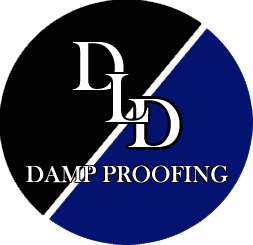rendering
rendering
Rendering is a highly skilled practice and should be undertaken by highly trained professionals only. Rendering is traditionally done by applying mortar to give protection of walls with a coating of sand & cement plus lime.
Expert Rendering Services
Our rendering service comes second to none. Furthermore our rendering works well to insulate and keep heat in, as well as weather proofing the exterior from cracks and weather damage.
With over 20 years’ experience within the rendering industry, you can rest safe in the knowledge that the job is good hands. We have wide variety of rendering types however the most common are mineral, produce from cement, lime, and quartz and marble.
Protect Your Property with Rendering
Our rendering systems allow you to fully protect your property from the harsh UK weather. Not only that but because our prices are highly competitive, you will be getting excellent value for money.
What is Rendering?
Rendering can involve using sand and cement or a flexible, breathable polymer modified render for homes with solid walls to enhance your home’s visual appeal. Depending on your bespoke requirements, rendering can come self-coloured or be painted later. Rendering can also be an
effective way of hiding poor-quality or mismatched brickwork on period properties, giving your home an attractive finish.
Why is Rendering important?
Changing and improving your home’s exterior of your home is one of the most effective methods of increasing your property value. Refreshing your home’s exterior with a coat of render is one of the cheapest ways of achieving this. Your home’s exterior is very important for making a positive first impression for anyone visiting your home as it is the first thing that any visitors or potential buyers may see. Enhancing your home’s exterior is especially important if the current exterior is in a poor condition, or a mixture of different mismatched materials has been used in the past. If you want to increase the architectural interest of your home, using render alongside masonry or timber cladding can be very helpful.
Additionally, rendering can be matched with external insulation to warm up a draughty home, lowering your energy costs and helping you do your bit for the environment.
What render should I choose?
There are many different types of render to choose from to suit your needs, including:
• Cement render: Often the default choice for external walls, cement render can be easily mixed on site but can require frequent repainting to look its best.
• Lime render: The best option for old homes as it is very adaptable and breathable. It is especially well-suited to period properties to alleviate damp problems.
• Monocouche render: Single coat render based on cement render and is ready to be mixed with water, then sprayed on or trowelled. There is no need for painting as it self-cleans, won’t crack and is self-coloured.
• Acrylic render: Often used as a top coat over existing finishes, Silicone may be added for longevity, preventing the need for cleaning.
• Polymer render: Usually cement or lime-based, they have polymers and other plastics added to prevent cracking.
What is the process of rendering a wall?
Usually, the complete rendering process takes around three to four weeks on average, involving the following stages:
1. The first step involves preparing the walls. Before a building is rendered, the walls should be surveyed. If there are any structural defects then repairs should be made, as well as stabilising any movement. Otherwise, the render finish is likely to fail as any new finish that is applied will only be as effective as the wall behind it.
2. External details (e.g. bargeboards) often have to be removed, as well as any rainwater and soil pipes and other external details such as alarm boxes. The render can then be applied.
3. Next, any external wall insulation will need to be applied before the render coat.
4. Then, a foundation for the render to fix to will need to be created.
5. After this, the render can be built up.
6. Next, any render finishes can be applied.
7. Finally, the external rainwater and soil pipes etc. can be reapplied.
For more information about rendering or to get a free no obligation quote, please feel free to get in touch with our friendly team of experts who will be more than happy to help you with your query.
If you have been toying with the idea of rendering your property and would like some more information about the process, then please do not hesitate to contact us today.
Rendering: A Complete Guide to Exterior Wall Finishes
Rendering is a popular method of applying a protective and decorative coating to the exterior walls of buildings. Common throughout the UK, rendering not only enhances the appearance of a property but also provides a vital barrier against the elements. Whether you’re updating an older home or finishing a new build, rendering is a smart and stylish solution that adds long-lasting value.
What Is Rendering?
Rendering involves applying a mixture—typically made of cement, sand, lime, or modern acrylic and silicone-based compounds—to external walls. Once set, the render creates a durable outer skin that protects the building from weather damage, improves insulation, and offers a clean, smooth or textured finish.
There are several types of render available, each offering different benefits depending on the look you want to achieve and the condition of your property.
Types of Rendering
Cement Render
This is the traditional rendering option, made from cement and sand. It’s affordable and widely used, but can crack over time if not applied correctly or if the underlying wall moves.
Lime Render
A breathable and flexible alternative to cement, lime render is ideal for older buildings and heritage properties. It allows moisture to escape, helping to prevent damp.
Acrylic Render
Acrylic renders are pre-mixed and contain plastic-based materials that increase flexibility and reduce the risk of cracking. They also come in various colours and finishes.
Silicone Render
A modern, self-cleaning option, silicone render repels dirt and water while allowing moisture to escape. It’s low-maintenance, weather-resistant, and ideal for modern homes.
Monocouche Render
This one-coat render offers colour-through finishes, eliminating the need for painting. It provides a smooth and contemporary look and is often machine-applied for efficiency.
Benefits of Rendering
Weather Protection
Rendering provides a tough exterior barrier against rain, wind, frost and pollution, helping to protect the underlying brick or blockwork.
Improved Appearance
Whether you’re covering unattractive brickwork or giving your home a modern update, rendering transforms the visual appeal of a property.
Increased Property Value
A clean, professional finish can significantly enhance kerb appeal and boost your home’s market value.
Thermal Efficiency
When combined with external wall insulation, rendering helps retain heat, reducing energy bills and improving comfort.
Low Maintenance
Modern renders are designed to be long-lasting and require minimal upkeep, especially silicone-based options.
Is Planning Permission Required?
Generally, rendering a home does not require planning permission unless your property is listed, located in a conservation area, or the work significantly alters the appearance of the building. It’s always best to check with your local council before starting work.
Professional Rendering Services
Rendering should be carried out by qualified professionals to ensure the best results. Proper surface preparation, material selection, and application technique are all crucial for a durable and attractive finish.
Rendering is a practical and stylish way to protect and upgrade your property’s exterior. With various finishes and materials available, there’s a solution to suit every type of home, from traditional cottages to modern new builds. If you’re considering rendering for your home or commercial building, contact an experienced rendering contractor to explore your options and receive expert advice.
Our Accreditations




© Copyright 2024 - DLD Damp proofing Ltd
